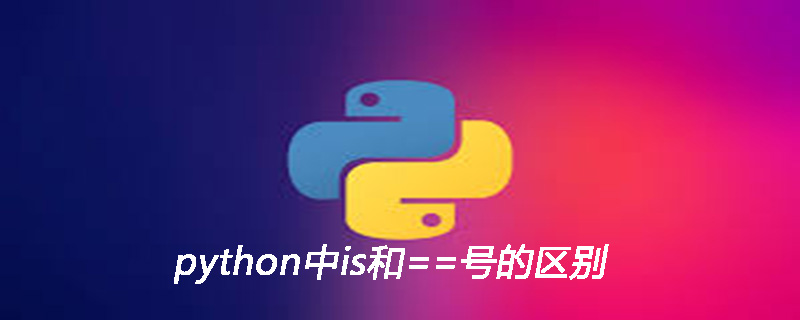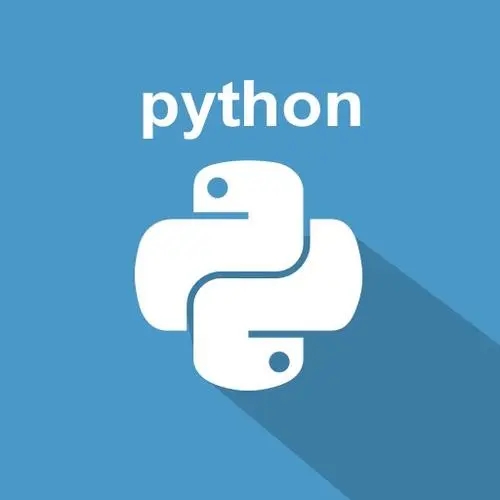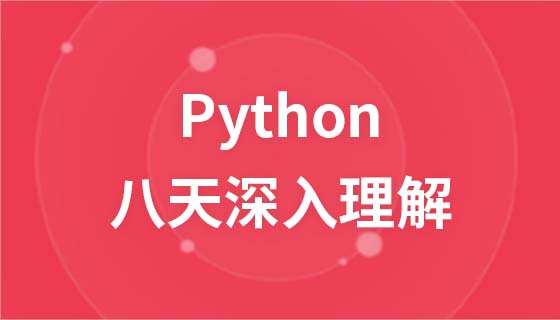在python中一切都是对象。python中对象包含的三个基本要素,分别是:id(身份标识)、type(数据类型)、value(值)。对象之间比较是否相等可以用 == ,也可以用 is 。is 和 == 都是对对象进行比较判断作用的,但对对象比较判断的内容并不相同。下面来看看具体区别在哪?

is 比较的是两个对象的id值是否相等,也就是比较两个对象是否为同一个实例对象,是否指向同一个内存地址。
== 比较的是两个对象的内容是否相等,默认会调用对象的 __eq__ 方法。
== 是python标准操作符中的比较操作符,用来比较判断两个对象的值是否相等。
立即学习“Python免费学习笔记(深入)”;
相关推荐:《Python视频教程》
先来看一个例子
>>> a = [1, 2, 3] >>> b = a >>> b is a True >>> b == a True >>> b = a[:] >>> b is a False >>> b == a True
is 也被叫做同一性运算符,也就是id是否相同。
看下面代码, a和b变量的id不同, 所以 b == a 是True, b is a 是False.
再来看一下他们的id:
>>> id(a) 4364243328 >>> >>> id(b) 4364202696
哪些情况下 is 和 == 结果是完全相同的?
>>> a = 256 >>> b = 256 >>> a is b True >>> a == b True >>> a = 1000 >>> b = 10**3 >>> a == b True >>> a is b False >>>
所以数字类型不完全相同。
那为什么256时相同, 而1000时不同呢?
因为出于对性能的考虑,Python内部做了很多的优化工作,对于整数对象,Python把一些频繁使用的整数对象缓存起来,保存到一个叫 small_ints 的链表中,在Python的整个生命周期内,任何需要引用这些整数对象的地方,都不再重新创建新的对象,而是直接引用缓存中的对象。
Python把这些可能频繁使用的整数对象规定在范围 [-5, 256] 之间的小对象放在 small_ints 中,但凡是需要用些小整数时,就从这里面取,不再去临时创建新的对象。
>>> c = 'miracle.young' >>> d = 'miracle.young' >>> c is d False >>> c == d True >>> c = 'miracleyoung' >>> d = 'miracleyoung' >>> c is c True >>> c == d True
所以字符串类型不完全相同,这个和解释器实现有关。
>>> a = (1,2,3) # a和b为元组类型
>>> b = (1,2,3)
>>> a is b
False
>>> a = [1,2,3] # a和b为list类型
>>> b = [1,2,3]
>>> a is b
False
>>> a = {'miracle':100,'young':1} # a和b为dict类型
>>> b = {'miracle':100,'young':1}
>>> a is b
False
>>> a = set([1,2,3]) # a和b为set类型
>>> b = set([1,2,3])
>>> a is b
False所以当变量是数字、字符串、元组,列表,字典时,is 和 == 都不相同, 不能互换使用!当比较值时,要使用 ==,比较是否是同一个内存地址时应该使用is。
以上就是python中is和==号的区别的详细内容,更多请关注php中文网其它相关文章!

python怎么学习?python怎么入门?python在哪学?python怎么学才快?不用担心,这里为大家提供了python速学教程(入门到精通),有需要的小伙伴保存下载就能学习啦!




Copyright 2014-2025 //m.sbmmt.com/ All Rights Reserved | php.cn | 湘ICP备2023035733号